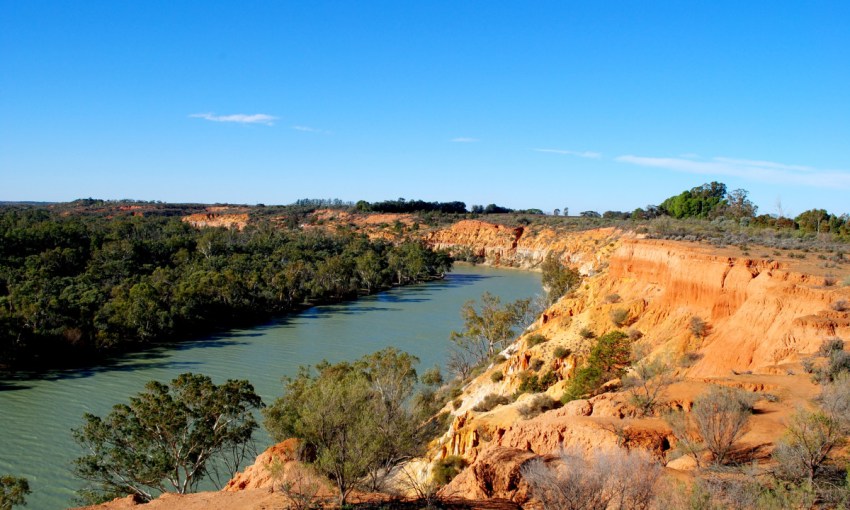Renmark takes an innovative approach to growing an abundance of fresh produce, with its early beginnings in citrus and grapes expanding to nuts, stone fruit and more niche markets like figs and pomegranates.
South Australian Agricultural Town of the Year finalist: Renmark

This fertile Riverland region is earning a global reputation for using its irrigation water wisely as it also adds value to its crops in local processing and packing sheds, distilleries and wineries.
And the region has long held an edge in export markets as it works collaboratively to protect its fruit fly free status.
There is a clear strength in local growers valuing their resources.
Last year, its world-class Renmark Irrigation Trust was globally recognised for its innovative use of River Murray water allocations.
In was named the world’s first corporation to secure ‘gold certification’ against the Alliance for Water Stewardship’s international standard.
Trust chief executive Rosalie Auricht proudly recounts how Renmark is Australia’s first irrigation settlement, settled by the Chaffey Brothers, and the trust is also South Australia’s oldest, turning 125 last year.
It works with about 600 irrigators in the region to best use its River Murray water for crops and the environment, shifting to smart technology with state-of-the-art drip water systems, soil moisture probes and automated water delivery.
Rosalie says Renmark became the first irrigation entity in Australia to sign an agreement to deliver Commonwealth environmental water in April 2016.
Between 2009 and 2018 it has reduced the amount of rights to use water by 23 per cent while its pumping station has been upgraded and a new metering system allows growers to see how much water they are using every 15 minutes.
“Every irrigation member has a device connected to the meter powered with solar,” Rosalie says.
Trust board member and owner of Fat Goose Fruits, Humphrey Howie, says one of the region’s great strengths is its ability to use water effectively and look for new innovative ways to farm.
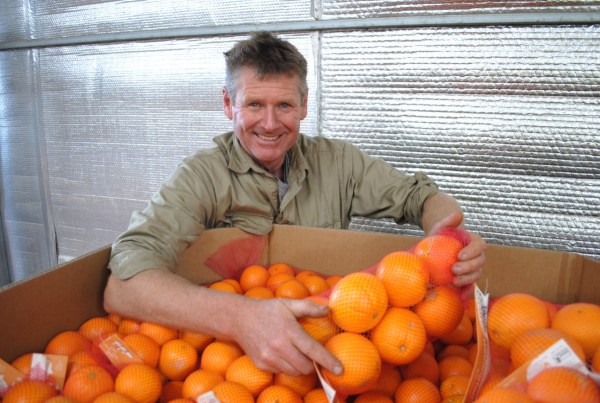
Humphrey Howie. Photo: Belinda Willis
Humphrey and Michelle Medhurst grow oranges, mandarins, lemons, grapefruit, limes, persimmons and “a handful of avocadoes”, and recently bought a vineyard.
They began converting their property to organic in 1994 after seeing a market opportunity. The goose in the business name referring to the 100 or so geese kept on the property to graze down weeds in the orchards and return vital nutrients to the soil.
The couple also opened their own packing shed in 2002, with fruit mainly going into the domestic market in Melbourne, Sydney, Perth, Tasmania and Adelaide.
“Conventional growers deliver to a big packing shed but growers, once the fruit leaves, get no control over price or market,” says Humphrey, who has an agriculture science degree.
They also have a small solar farm to produce their own electricity. Many properties now do the same, the majority installed by Yates Electrical Services through its RED Mud Industries projects.
This region’s commitment to collaboration and innovation can also be seen at the striking 23rd St Distillery building on the way into the town centre.
It was first built by Barossa firm Chateau Tanunda in 1914 to take advantage of burgeoning Riverland grape harvests and was later taken over by a group of 130 fruit growers to form The Renmark Growers’ Distillery Company Limited.
This was the first cooperative of its kind in Australia selling under the Renmano brand, but a series of mergers and takeovers led to its decline with production ceasing in 2002.
Angelo Kotses of drinks business Bickford’s Group saw an opportunity and bought its fermenting brandy, distillery and buildings in 2016, embarking on a project to revitalize the site at Twenty Third Street in Renmark.
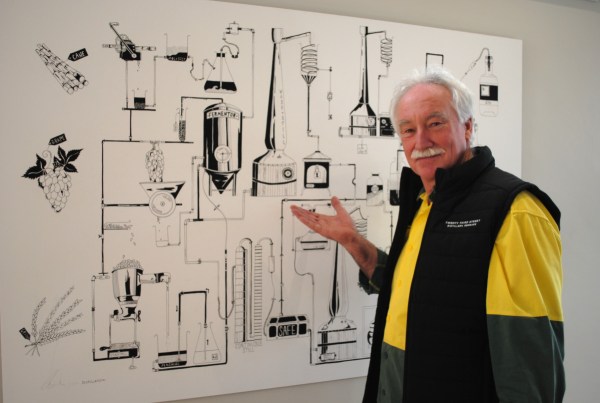
Photo: Belinda Willis
It has since won acclaim for its tasting and events space, along with its range of brandy, gin, vodka and more recently whiskey. Many products are distilled on-site and using local produce where possible.
Distillery manager Graham Buller says the rose petal vodka celebrates Renmark’s annual rose festival using petals from nearby Ruston’s Roses.
The business also continues to sell the famed Renmano brand Black Bottle brandy, helping to further raise the profile of the region with exports to the United Kingdom and Malaysia.
“Renmark would certainly be the brandy capital of Australia,” Graham says.
The other famed local brandy is St Agnes, produced by family-owned winery Angove’s Winemakers – one of the region’s oldest wineries after being established in 1910.
It, too, is constantly evolving with the current fifth-generation winemakers converting its vineyards to organic. One of its family members, Tom Angove, is famous for inventing the wine cask which he first patented in 1965.
The Riverland is the largest wine-producing region in Australia, and is home to 1000 wine grape growers representing 20,600 hectares of vines.
These days its growers, backed by Riverland Wine, are working to produce more premium wines, marketing beyond its reputation for bulk wines.
Among them is Jim Markeas at Mallee Estate in Renmark who has opened a Greek restaurant at his cellar door to serve food with his award-winning wines.
In 2015, he was named Winemaker of the Year at the prestigious International Wine Competition in New York.
Almond Board of Australia chief Ross Skinners says the Riverland also delivers about 24 per cent of almond production in Australia.
Renmark-based Almondco is one of the region’s largest employers, and is now supplied by 140 grower members after starting as a small company in Willunga and moving to the Riverland in the early 1990s.
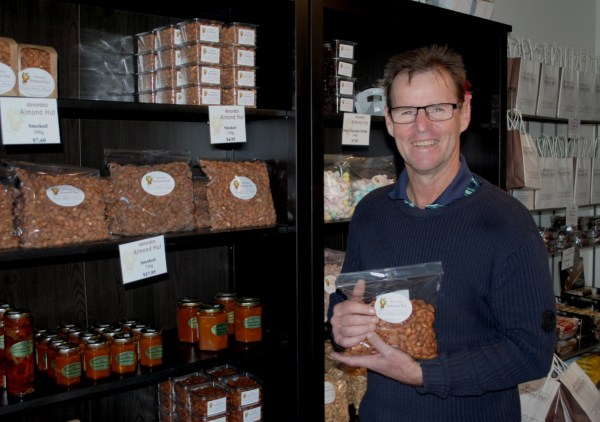
A growth phase over the past seven years has seen volumes rise from less than 5000 tonnes in 2007 to more than 22,000 tonnes in 2016.
Company turnover grew from less than $40 million to more than $260 million, with a new hulling and shelling facility being built in Griffith interstate.
Group sales and marketing manager Tim Jackson says once almonds are hulled, shelled and sized they are processed and packed at Renmark where more than 100 different products are created ranging from almond meal to almond milk.
“In the last 10 years we’ve gone from employing 30 people to 170 across three sites,” he says.
The company exports about 50 per cent of the crop and is constantly innovating with new technology like hulling machines or in finding new markets or products.
Kate Strachan is also taking an innovative approach to production, albeit in more niche crops.
Kate, who owns Strachan Produce with her brother Fred Strachan, is chair of Summerfruit SA, a member of the irrigation trust board and teaches VET agriculture courses at the local high school.

She is investing in new water monitoring devices and plant research at the third generation owned property as she works toward organic certification.
“I’m tracking to use just over one-fifth of my water allocation and with this capital and investment I’m working with less water and growing more crops,” she says.
The property focuses on crops chosen for their hardiness and suitability to the environment with Kate selling 18 tonnes of figs to Maggie Beer last year, along with quinces.
“We are growing pomegranates now too but they are not fully producing yet,” she says.
One of the largest local employers is the vast ASX listed Costa Group, which works in multiple categories including citrus, avocadoes, tomatoes, grapes and berries.
Citrus supply manager Ben Cant says 90 per cent of Costa’s citrus production comes from Renmark with 75 per cent of fruit packed from its own farms.
It employs about 900 harvest workers and another 200 to 300 in the packing and marketing areas.
The group was founded in the 1970s and the citrus category of the business last year had a turnover of about $120 million. The Japanese market is a key driver and exports also travel to China, the USA, South East Asia, and New Zealand.
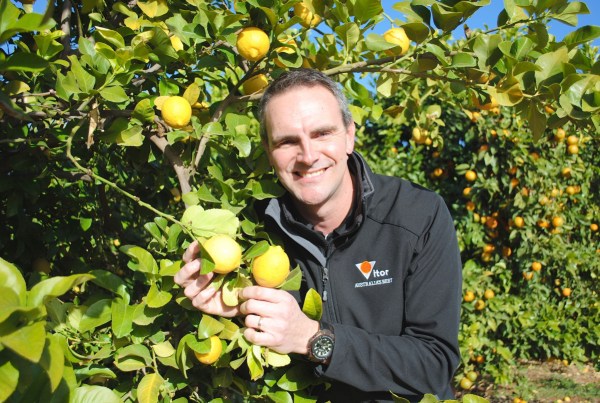
Costa also sells to all the major supermarkets in Australia and has two citrus packing sheds locally, with the properties trying new varieties to meet demand in overseas markets.
It has its own nursery to propagate trees, and the group has adopted new technology including moisture monitoring equipment to better grow fruit over its 2300 hectare holdings in the Renmark region.
This means the group can manipulate watering to produce the best quality fruit.
Ben says the region’s fruit fly free status boosts citrus value in export markets.
“There’s strong community awareness around its pest-free status, strong local diligence and many of the staff who work at the Yamba roadblock live in Renmark,” Ben says.
“We also have our own entomologists, we have pest scouts, surveys, to ensure no pests are damaging the rind of the fruit and we monitor the levels of good bugs versus bad bugs.”
Ben says seasonal work is well covered with Costa Group part of the Federal Government’s Pacific Islander scheme, employing some 300 people through the program, providing accommodation both on and off-site, training on the job and identifying skill sets.
QFM is another innovative group, according to Renmark Paringa Council economic development officer Mark Bell who says it has a stone fruit assessment orchard owned by local growers that helps them choose the best varieties to grow locally.
“They are able to obtain a 15 to 20 per cent premium in the market because of the quality they produce,” he says.
Mark says Renmark growers are continually looking for better varieties and less water-intensive crops.
He cites the story of a date farm started in nearby Lyrup about 20 years ago where its owner has gradually improved growing and harvest techniques to make it profitable.
“Avocadoes were mainly grown in Queensland; local growers learnt to grow them here. After initially planting them (and) the fruit dropped to the ground in the heat, they learnt to water overhead at the right time,” he says.
“Forty years ago we decided to grow almonds in this region and it’s now the biggest export market for this region, along with citrus and wine grapes.”
The Agricultural Town of the Year is a State Government initiative designed to highlight South Australian towns that support and promote primary industries and all that they bring to rural communities.
The Government received 43 nominations, with an independent judging panel whittling that list down to five finalists – Cleve, Kapunda, Langhorne Creek, Millicent and Renmark.
Each of the five finalist towns will be profiled in SALIFE digital over the coming weeks.
The winner, also selected by the independent panel, will be announced at the South Australian Regional Showcase celebration event on October 11.
This story is sponsored by Primary Industries and Regions SA.



